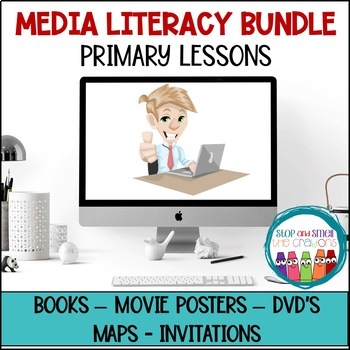How young do we NEED to start teaching media literacy? This question popped into my head the other night when I was out to dinner with my family. There was a family a couple of tables over from us that caught my attention. While they were waiting for their food, the dad was on his phone. I happened to overhear one of their young kids (If I had to guess, around 2nd or 3rd grade) go, “Here, Dad, let me show you how to get there.” He proceeded to take his dad’s phone, pushed a few times on the screen, and handed it back. The dad was appreciative, and their conversation moved on, but it made me pause. Younger and younger generations have technology at their fingertips, are able to navigate it almost like it’s second nature for them, and can access multiple forms of media instantly.

This is a beautiful tool, but it opens them up to a scary world that our students need to know how to navigate. Media literacy has become an essential skill for our kids inside and outside of school. By equipping them with media literacy skills, we can help them become respectful and responsible consumers and creators of media content. So, grab a seat, and let’s dive into the fascinating realm of media literacy in the elementary classroom, where young minds are prepared to navigate the ever-evolving media landscape.
What is Media Literacy?
Before we jump in, let’s go over what exactly media literacy is. Media literacy is all about teaching elementary students how to critically analyze and understand the media they come across. Media comes in the forms of TV, social media, podcasts, music, radio, or movies.
In today’s digital age, information bombards us from all directions making media literacy more crucial than ever. By teaching our students about media literacy we can equip young learners to do the following:

- Distinguish fact vs. fiction
- Question or challenge what they see
- Make informed decisions
- Navigate the vast ocean of information in media
- Avoid falling into the trap of misinformation
- Become responsible digital citizens
So many times, I see my students relying on the blurb of information at the top of their search page or the first link in the list. By strengthening their media literacy skills, they are given strategies and tools to assess the accuracy and relevance of the information.
The benefits? Oh, there are plenty! Media literacy helps them:
- Sharpens their critical thinking skills
- Boosts creativity through learning how to express themselves across different media forms
- Increases engagement with media in a safe, respectful manner
So, media literacy isn’t just a cool buzzword; it’s a powerful toolset that sets them up for success in the digital world and beyond!
What Skills Do Our Students Learn?
There are quite a bunch of important key skills and concepts that media literacy covers for our learners. The first skill is critical thinking – it’s like having a superhero’s analytical mind. With critical thinking skills, our students learn to question, evaluate, and think critically about the media they encounter.

Next, we have media analysis, which is all about decoding those tricky media messages. Students can examine DVDs, books, or even movie posters to understand the author’s purpose and overt vs. implied messages.
Then we have digital citizenship – this one’s all about being a responsible digital citizen. This is where we teach our students how to navigate the online world safely, respect others’ privacy, and understand the consequences of their online actions.
Lastly, information literacy – this skill helps students become expert fact-checkers. They learn how to tell if a source is reliable, how to fact-check information, and how to identify the trustworthy from the not-so-trustworthy.
What Does Media Literacy Look Like in the Elementary Classroom?
How can we teach these skills in the elementary classroom? During my time teaching media literacy, I have found that having engaging discussions is key. You need to create a space for your students to ask questions, share experiences, and practice the right skills. Some activities I have done with my primary students are analyzing advertisements, creating their own media content, and exploring different online platforms responsibly through research projects.

Also, in my classroom, I use the resources from my Media Literacy Bundle to help my little learners develop their media literacy skills. In this bundle, resources cover the following media skills:
- Map Skills
- Book Media
- DVD Media
- Movie Posters Media
- Overt and Implied Messages Media
With these real-world forms of media activities, your students will be able to:
- Identify overt and implied messages in simple media texts
- Produce media texts for specific purposes and audiences using appropriate forms/conventions/techniques
- Identify elements and characteristics of selected media forms
- Identify the conventions/techniques used in some familiar media forms
- Identify the purpose and intended audience of simple media texts
- Express personal thoughts about media works and explain their responses

Ready to Help Your Learners Become Responsible Digital Citizens?
I always encourage my students to ask questions and pause and think about the media they are reading, watching, or listening to. The world of media is confusing and greatly persuasive. By strengthening these skills, our little learners will be well-prepared to navigate the media landscape with confidence and make smart choices like true media literacy champions!
Save this Post for Later!
Remember to pin this post to your favorite teacher or media literacy Pinterest board to return to later for helpful information on how to help your students’ confidence with media literacy!
